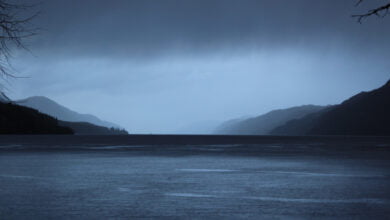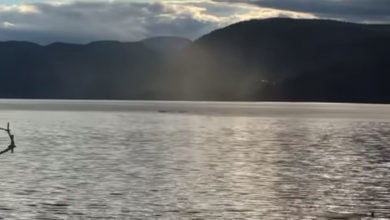
In November 1953, a mysterious corpse washed up on the shore of Canvey Island, Essex. The unfortunate residents who found the carcass, shocked by its terrible appearance, covered it with seaweed and contacted the authorities.
A bug-eyed abomination with pulpy skin and horrible, spindly teeth, it was unlike anything they had ever seen.
It was a monster.
The Canvey Island Monster
Zoologists soon arrived to examine the unidentified specimen.
Measuring roughly 76 cm (2.5 ft) with large eyes and thick, pinkish skin, its most profound characteristic were two oddly-shaped legs, concaved feet with five toes each. But it also had fins and a gaping, teeth-filled mouth, and pulpous skin soft to the touch.
Unfortunately, it had decomposed, and was in poor condition. Officials provided little information to the public, and the remains were inexplicably cremated, leaving many to wonder just what they had seen washed up on the shore.
However, in August 1954, Reverend Joseph Overs, known then as “The Canvey Photographer,” found the remains of another monster.
This carcass was in much better condition, and much larger. It measured 120 cm (3.9 ft) long, and weighed nearly 11.3 kg (25 lbs), with the same bulging eyes, prominent gills, and five-toed feet as its predecessor.
After a cursory investigation, it too mysteriously vanished. Not an official word on the subject has been spoken since.
Anglerfish Or Cryptid, It’s Still A Monster
Decades later, two independent investigations, one by journalist Nicholas Warren and the other by ichthyologist Alwyne Wheeler, came to the conclusion that the mysterious remains were those of common anglerfish.
An anglerfish is a very strange aquatic creature, which National Geographic describes as the “ugliest animal on the planet.”
They have “lures” on top of their heads and long, sharp teeth. They measure anywhere from 20 cm (8 in) to 1 m (3.3 ft), and can weigh up to 50 kg (110 lbs). They also have two oddly-shaped fins, which may to the layman appear to be “feet.”
Another possibility is that the Canvey Island monsters were frogfish, a type of anglerfish which can actually use their pectoral fins to “walk.”
They have a sponge-like appearance and are sometimes red or pink, matching the description of the specimens found on Canvey Island. They’re commonly found in tropical regions, but its not unheard of for a fish of this type to find its way north.
The mystery of the Canvey Island Monsters stems more from a lack of information and the strange nature of their disappearance than anything else. Any sense of a “cover-up,” any hint that something is being kept from the public, allows these tales to proliferate and become something more than they originally were.
Was the Canvey Island Monster a true cryptid? Or was it an ordinary, though very peculiar, fish? For now, we can safely assume it was the latter, but cryptozoologists will no doubt continue to ponder those mysterious remains found on the Canvey shore over half a century ago.





